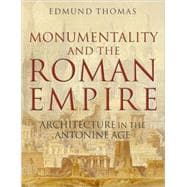
Note: Supplemental materials are not guaranteed with Rental or Used book purchases.
Purchase Benefits
What is included with this book?
| Introduction | |
| Monumental Form | |
| Principles of monumental form in antiquity | |
| The contribution of Antoninus Pius | |
| The symbolic significance of monumental forms under the Antonines | |
| Patrons and the monumentality of architecture | |
| Creating form: architects in the Antonine age | |
| Conclusion | |
| Monuments of City and Empire | |
| Buildings, politics, and the monumentality of Antonine cities | |
| The cities and the emperor | |
| Imperial architecture | |
| Conclusion | |
| Monuments and Memory | |
| The monuments of the past | |
| Building the monuments of the future | |
| Conclusion | |
| Responses to Monuments | |
| Experiencing and responding to public architecture | |
| The architectural descriptions of Lucian of Samosata | |
| Conclusion | |
| Table of Contents provided by Publisher. All Rights Reserved. |
The New copy of this book will include any supplemental materials advertised. Please check the title of the book to determine if it should include any access cards, study guides, lab manuals, CDs, etc.
The Used, Rental and eBook copies of this book are not guaranteed to include any supplemental materials. Typically, only the book itself is included. This is true even if the title states it includes any access cards, study guides, lab manuals, CDs, etc.